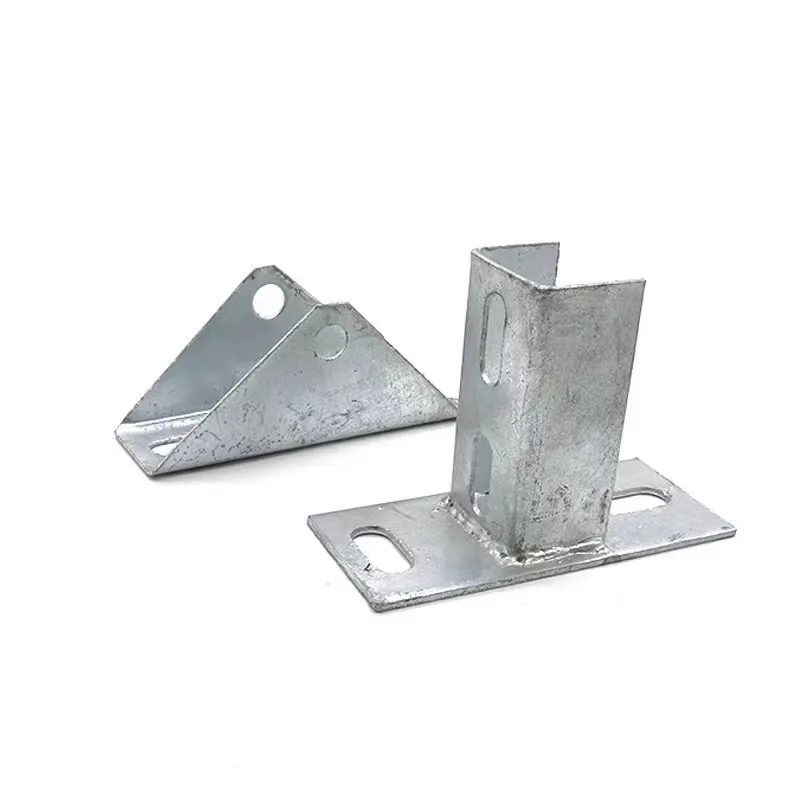

Understanding the Functionality and Uses of Quarter Inch Washers in Various Projects
Ogo . 17, 2024 15:57 Back to list
Understanding the Functionality and Uses of Quarter Inch Washers in Various Projects
Understanding Quarter-Inch Washers What They Are and Their Applications
When it comes to construction and mechanical assembly, small components often play an indispensable role. Among these components, the quarter-inch washer is a tiny yet mighty element that forms part of many projects. These round, flat discs with a central hole may seem inconspicuous, but they provide crucial functions in various applications.
A quarter-inch washer typically has an outer diameter larger than a quarter inch, often about 3/4 inch or more, depending on the specific type and standard. The primary purpose of this washer is to distribute the load of a threaded fastener like a screw or bolt. By increasing the surface area where the fastener contacts the material, the washer reduces the risk of damage to the surface and helps prevent the fastener from loosening over time.
Types of Quarter-Inch Washers
There are several types of washers, including flat washers, lock washers, and fender washers, each designed for specific functions
1. Flat Washers The most common type, flat washers provide a smooth surface, which helps distribute the load from a nut or bolt evenly. They are typically used in general construction and mechanical applications.
2. Lock Washers These washers are designed to prevent loosening when subjected to vibrations. They feature a series of ridges or a split that grips the bolt or screw, effectively locking it in place.
3. Fender Washers With a large outer diameter and a smaller inner diameter, fender washers are commonly used to distribute loads over a larger area, ideal for thin sheet materials that could be damaged by standard washers.
Materials and Specifications
quarter inch washer

Quarter-inch washers can be made from various materials, including steel, stainless steel, plastic, and rubber. Steel washers are robust and often used in heavy-duty applications. Stainless steel is corrosion-resistant, making it ideal for outdoor or damp environments. Plastic washers are lightweight and often used in electronic applications due to their insulating properties, while rubber washers help create seals and prevent leakages.
The choice of material not only affects the performance but also influences the overall cost of the project. Washers are available in different grades and finishes, which can impact their strength, corrosion resistance, and aesthetic appeal.
Applications of Quarter-Inch Washers
Quarter-inch washers are versatile and find applications across multiple industries. In construction, they are used in framing, securing beams, and installing hardware. In automotive assemblies, they provide secure fastening and stability in critical components, such as engines and suspensions. They are also prevalent in plumbing tasks, electrical installations, and furniture assembly, showcasing their adaptability in various scenarios.
Moreover, they are essential in DIY projects. Whether you are assembling a piece of furniture, fixing a bicycle, or working on home improvements, quarter-inch washers can enhance the integrity and longevity of your work.
Installation and Best Practices
When using quarter-inch washers, it is essential to follow proper installation techniques. Ensure that the washer is placed correctly between the fastener (like a bolt or nut) and the material being fastened. This prevents deformation and ensures that the load is evenly distributed.
Regular inspections are also crucial, especially in applications exposed to vibrations, moisture, and fluctuating temperatures. Replacing worn or damaged washers can save time and money in the long run by avoiding premature failure of the entire assembly.
In summary, quarter-inch washers may seem small, but their effects are significant in maintaining the integrity and durability of various structures and components. Understanding their types, materials, and applications can lead to better decision-making in construction and mechanical assembly, reinforcing the notion that every component, no matter how small, contributes to the larger picture.
Latest news
-
Hot Dip Galvanized Bolts-About LongZe|High Strength, Corrosion Resistance
NewsJul.30,2025
-
High-Strength Hot Dip Galvanized Bolts - Hebei Longze | Corrosion Resistance, Customization
NewsJul.30,2025
-
Hot Dip Galvanized Bolts-Hebei Longze|Corrosion Resistance&High Strength
NewsJul.30,2025
-
High-Strength Hot-Dip Galvanized Bolts-Hebei Longze|Corrosion Resistance&High Strength
NewsJul.30,2025
-
Hot Dip Galvanized Bolts-Hebei Longze|Corrosion Resistance&High Strength
NewsJul.30,2025
-
Hot Dip Galvanized Bolts - Hebei Longze | Corrosion Resistance, High Strength
NewsJul.30,2025

